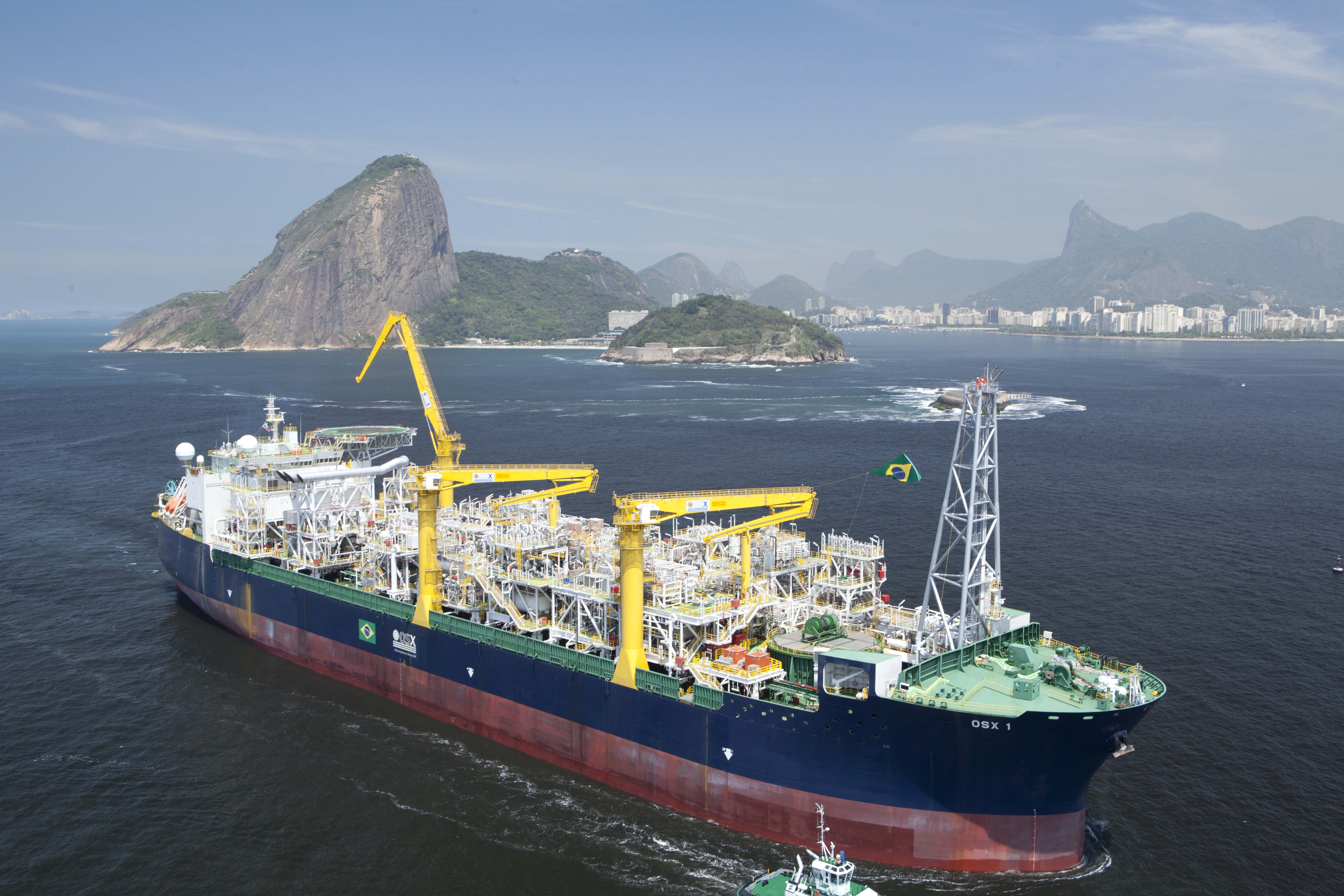
Three Oil Giants Commit $8 Billion to Angola Energy Projects During Industry Conference
Angola's $8 Billion Energy Gamble: Where Deepwater Diplomacy Meets Market Reality
LUANDA, Angola — During the opening ceremony of the Angola Oil & Gas Conference and Exhibition on Wednesday, three energy giants delivered commitments that reverberated far beyond the ceremonial backdrop of Angola's approaching 50th independence anniversary. Eni, bp, and TotalEnergies announced a combined $8 billion in fresh investments for Angolan projects—a financial inflection point that arrives precisely as Africa's second-largest oil producer grapples with production decline and fiscal pressures.

The timing reflects more than coincidence. These commitments materialized as Angola has systematically reformed its investment framework, introducing fiscal incentives designed to arrest the natural decline of mature offshore fields while positioning the country for a gas-centric energy future. The announcements represent the largest coordinated investment surge in Angola's energy sector since the deepwater exploration boom that established the country as a major crude producer two decades ago.
The Architecture of Ambition
The centerpiece announcements reveal a sophisticated strategic calculus. Azule Energy, the 50-50 joint venture between bp and Eni, committed to deploy approximately $5 billion across multiple project phases, building on the $5 billion already invested since the partnership's inception. TotalEnergies simultaneously unveiled $3 billion in commitments through its Dalia Life Extension initiative, alongside a $6 billion Kaminho development already underway.
These figures represent more than capital allocation—they signal confidence in Angola's reformed investment climate. The November 2024 Incremental Production Decree, which reduced fiscal burdens on mature offshore developments, created the regulatory foundation for these commitments. Industry analysts note that this policy shift effectively transformed stranded brownfield assets into viable cash generators.
Brownfield assets are existing or previously developed sites that often require redevelopment, upgrade, or repurposing. They stand in contrast to greenfield assets, which are undeveloped, and are a significant consideration for investment strategies across various industries, including oil and gas.
"The fiscal architecture finally aligns with project economics," observed one senior energy economist familiar with Angolan operations. "These aren't charity investments—they're calculated bets on rehabilitated returns."
Engineering the Impossible Timeline
The technical execution behind these commitments defies conventional project timelines. Azule's Agogo Integrated West Hub achieved first oil in July 2025—nearly one year ahead of schedule—demonstrating operational capabilities that extend beyond mere capital commitment. The project's 175,000 barrels per day production capacity utilizes fully electrified floating production storage and offloading vessels , incorporating pilot carbon capture technology that positions Angola at the forefront of offshore emissions reduction.

This achievement reverberates beyond operational metrics. The accelerated timeline suggests that Angola's offshore execution environment—long plagued by delays and cost overruns—has undergone fundamental improvement. Project managers attribute this transformation to streamlined regulatory processes, improved local content coordination, and lessons learned from previous deepwater developments.
TotalEnergies' parallel achievements reinforce this narrative. The company brought two major projects online in 2025—CLOV Phase 3 Development and Begonia oilfields—adding 60,000 barrels per day to national production. The Begonia project particularly exemplifies technical innovation as Angola's first inter-block development, demonstrating regulatory flexibility that enables optimal field development across traditional boundaries.
The Gas Equation Changes Everything
Behind the oil headlines, a more transformative development emerges: Angola's pivot toward gas monetization. The New Gas Consortium project represents the country's first non-associated gas development, targeting over 300 million standard cubic feet per day at plateau production. First gas, anticipated in late 2025 or early 2026, will fundamentally alter Angola's energy export profile.
Angola's Historical Oil vs. Natural Gas Production, showing the dominance of oil and the emerging growth in gas.
| Year | Oil Production (million barrels per day) | Natural Gas Production (Billion cubic feet/year) |
|---|---|---|
| 2023 | 1.2 | 197.66 |
| 2022 | 1.17 | 194.59 |
| 2020 | 1.15 | 399.88 |
This transition carries profound implications for international market positioning. European Union methane import regulations, tightening through 2030, will increasingly favor suppliers with demonstrated measurement, reporting, and verification capabilities. Angola's participation in the Oil and Gas Methane Partnership 2.0 framework, combined with advanced flare reduction technology at new developments, positions the country advantageously as regulatory requirements intensify.
Market dynamics further support this gas strategy. Angola LNG's capacity utilization, historically constrained by feedstock reliability, stands to benefit significantly from dedicated non-associated gas supply. Recent improvements in facility operations, coupled with Chevron's Sanha Lean Gas Connection contribution, suggest sustainable production levels above 80% utilization—a threshold that enables meaningful revenue generation and potential expansion planning.
Risk Architecture in an Uncertain World
The investment surge unfolds against a backdrop of carefully managed sovereign risk. Angola's post-OPEC exit strategy requires maintaining production near 1.0-1.1 million barrels per day while transitioning toward gas-heavy revenue streams. The challenge extends beyond technical execution to encompass macroeconomic stability, subsidy reform, and foreign exchange management.
Angola's Crude Oil Production Decline Over the Past Decade, illustrating the challenge these new investments aim to address.
| Year | Crude Oil Production (Million Barrels Per Day) | Source |
|---|---|---|
| 2014 | 1.671 | |
| 2015 | 1.800 | |
| 2016 | 1.670 | |
| 2017 | 1.577 | |
| 2018 | 1.473 | |
| 2019 | 1.377 | |
| 2020 | 1.145 | |
| 2021 | 1.110 | |
| 2022 | 1.160 | |
| 2023 | 1.098 | |
| 2024 | 1.134 |
Recent sovereign risk indicators present a mixed picture. Azule Energy's successful $1.2 billion five-year bond issuance in January 2025, priced at 8.125% with a Fitch B+ rating, demonstrates investor appetite despite elevated borrowing costs. The pricing reflects both opportunity recognition and risk premiums that demand project returns in excess of traditional deepwater developments.
Currency exposure remains a persistent concern. While production revenues flow in U.S. dollars through production sharing contracts, local costs increasingly reflect kwanza depreciation and inflationary pressures. Energy companies have mitigated this exposure through enhanced local content requirements that substitute imported services with domestic alternatives, creating natural hedges while supporting national economic objectives.
Market Intelligence for the Next Decade
Forward-looking investment implications suggest a multi-phase transformation. The immediate 2025-2027 period should witness temporary production stabilization as new projects offset natural field decline. Agogo's contribution, combined with TotalEnergies' brownfield additions, provides sufficient volume to maintain Angola's million-barrel daily target through mid-decade.
The subsequent phase, 2027-2030, presents greater uncertainty. Sustained production levels depend critically on additional final investment decisions, particularly Azule's PAJ project in Block 31 and continued infill drilling across mature fields. The $60 billion five-year investment target promoted by Angola's National Oil, Gas and Biofuels Agency requires consistent project sanctioning at current commitment levels.
Gas development timelines offer more predictable trajectories. The New Gas Consortium's late-2025 startup, if achieved, establishes a foundation for Angola LNG expansion planning. Domestic gas utilization, particularly for power generation and industrial development, represents a parallel growth avenue that reduces flaring while supporting economic diversification.
Strategic Positioning in the Energy Transition
The investment commitments occur within a broader context of energy transition pressures and portfolio optimization. Major energy companies face increasing scrutiny regarding long-term hydrocarbon investments, particularly in frontier markets. Angola's projects navigate this challenge through explicit environmental and social governance improvements, including electrified production facilities, carbon capture pilots, and enhanced methane management.
These technological enhancements serve dual purposes: reducing operational emissions while positioning Angola favorably in increasingly selective global markets. European buyers, constrained by regulatory requirements and corporate commitments, will progressively favor suppliers with demonstrated environmental performance. Angola's proactive approach creates competitive advantages that translate directly into pricing premiums and contract security.
The Verdict for Investment Professionals
Angola's $8 billion energy commitment represents a calculated bet on brownfield economics, regulatory reform, and gas monetization potential. The investment thesis relies on three critical assumptions: sustained fiscal discipline, execution excellence, and favorable commodity price environments.
Risk factors include sovereign stability, service sector capacity constraints, and potential delays in gas infrastructure development. However, the project portfolio's emphasis on near-term cash flows and proven reservoir development mitigates many traditional frontier market exposures.
For equity investors, the developments suggest sustained cash generation from bp, Eni, and TotalEnergies' Angolan operations through mid-decade. The gas component adds optionality for longer-term value creation, particularly as global LNG markets tighten and European import standards favor compliant suppliers.
Production Sharing Contracts (PSCs) are a common fiscal regime in the oil and gas sector. Under a PSC, a host government grants a contractor company the right to explore and produce resources, with the resulting production (or revenue) being shared between them after the company recovers its costs. This model defines the allocation of profits and risks, detailing how resources are extracted and shared.
The investments ultimately reflect a mature understanding of Angola's transformed risk-return profile—one where disciplined capital allocation, technological innovation, and regulatory alignment create investable opportunities within Africa's evolving energy landscape.
Investment Disclaimer: This analysis presents market observations based on publicly available information and established economic principles. Past performance does not guarantee future results. Readers should consult qualified financial advisors before making investment decisions. Commodity investments carry inherent volatility and geopolitical risks that may result in significant losses.